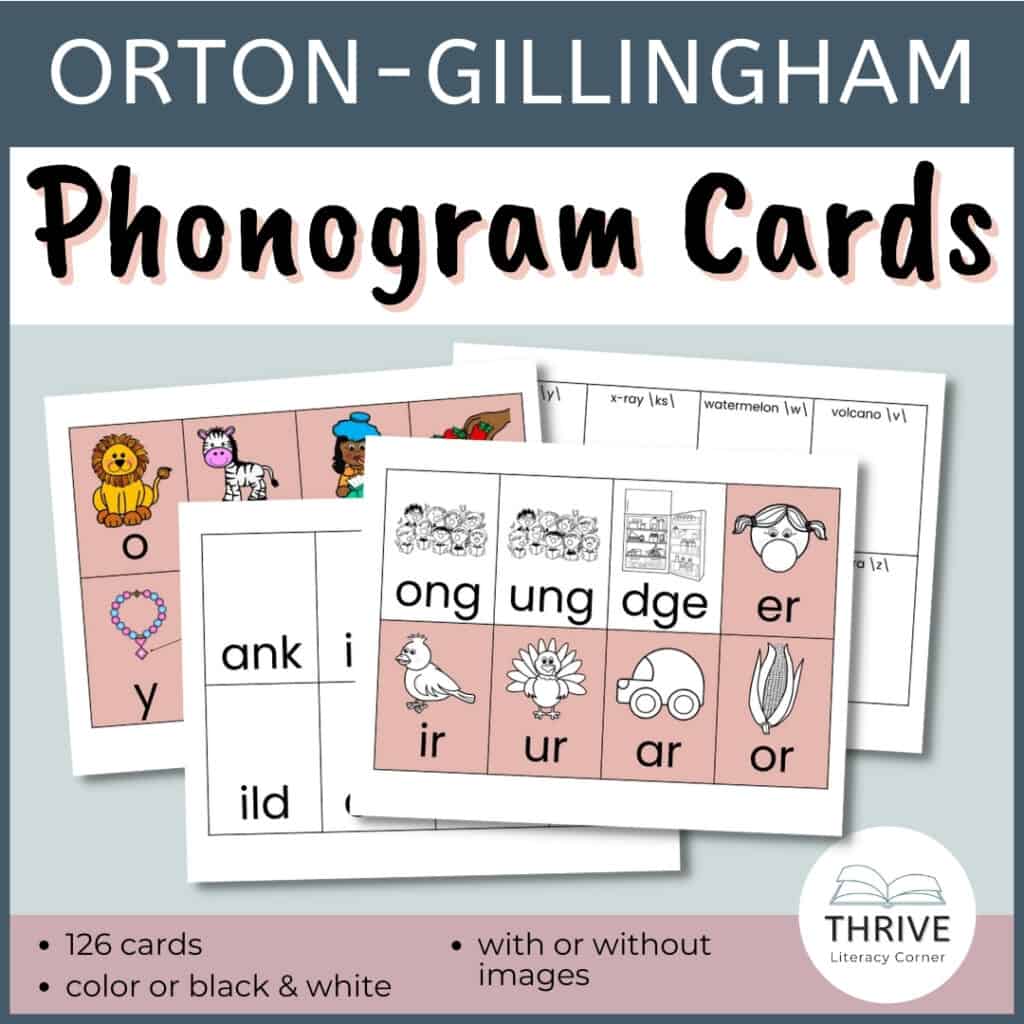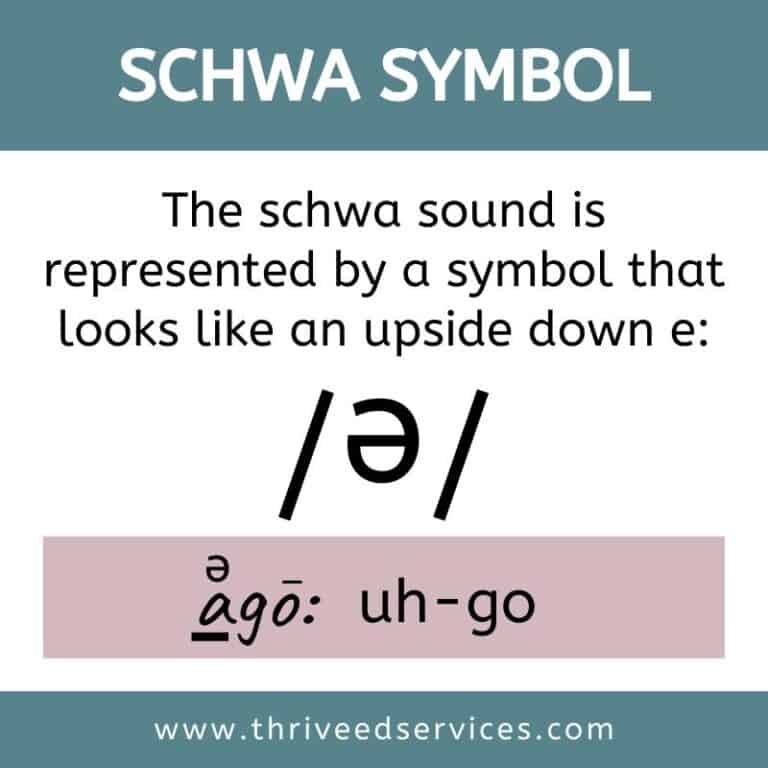All About the Alphabetic Principle + FREE SOR Quick Start Guide
This post may contain affiliate links, and I will earn a commission if you purchase through these links. Please read the disclosure policy for more details.
The alphabetic principle is an important part of the reading process. According to Reading Rockets, “Children’s reading development is dependent on their understanding of the alphabetic principle”.
But what do we mean when we talk about the alphabetic principle? And how can we develop it in beginning and struggling readers?
What is the alphabetic principle?
The alphabetic principle is the ability to associate sounds with letters and use those sounds to form words. It is knowing that words in spoken language are represented in print and that these sounds relate to the letters that represent them.
Alphabet Knowledge
Alphabetic knowledge is recognizing all letters and knowing that words are made up of letters representing speech sounds. This is the ability to identify and name different letters in both lower and uppercase and the sounds they represent.
Phonological Recoding
Phonological recoding is knowing how to read the letters to sound out the words and spell unfamiliar words. Learning that there is a predictable relationship between sounds and letters allows students to read and spell unfamiliar words and become fluent readers.

Why Is the Alphabetic Principle Important?
As stated in the introduction, understanding the alphabetic principle is paramount to students developing their reading skills. Without having an understanding of the alphabetic principle, students cannot read or write. It is the basis of the English language (and many other languages too).
I came across this quote from a research paper and think it best summarizes why the alphabetic principle is so important: “Unless the reader-to-be can convert the printed characters on the page into the phonetic code, these letters remain just a bunch of lines and circles totally devoid of linguistic meaning.” (Shaywitz, 2003, p. 50)

Ehri’s Phases of Word Reading Development
Knowing Ehri’s Phases of Word Reading Development can help us understand how the alphabetic principle develops.
Pre-Alphabetic
In the pre-alphabetic phase, readers have minimal alphabet knowledge but can recognize symbols. For example, a child associates logos with a brand and says the name of the brand.
Partial Alphabetic
In this partial alphabetic phase, readers have some knowledge of letters and sounds. Readers are learning letter names and sounds, can often recognize initial sounds, and work on phonemic awareness in this phase. This is the stage where readers develop their alphabet awareness.
Full Alphabetic
In the full alphabetic phase, readers learn that each letter represents a sound. Readers often work on segmenting and blending individual letters. This is the stage where letter-sound relationships really start to develop.
Consolidated Alphabetic
In the consolidated alphabetic phase, readers learn that sequences of letters, such as chunks, represent one sound. At this point, readers are not decoding letter by letter, and are using sequences of letters and morphemes to sound out unfamiliar words. Knowledge of letter-sound correspondence is solidified in this stage.

Explicit Phonics Instruction
The key to developing the alphabetic principle in all readers is through explicit phonics instruction. Explicit instruction in focuses on teaching letter-sound correspondence in a systematic way. The following aspects of explicit phonics instruction help to develop the alphabetic principle:
- Connects letters to their most common sound or sounds – Readers learn the most common sounds and rules first and know to apply this knowledge first when reading an unfamiliar word.
- Read words using what they know about – Readers use the phonics knowledge they have to sound out and blend sounds into words. Knowing syllable patterns and spelling generalizations also helps with decoding when they see a new word.
- Working with decodable texts – This allows readers to practice what they have learned about the alphabetic principle since they contain fewer irregular and unknown words.
Explicit phonics instruction will help students read regular words with more ease. But let’s talk about irregular words which are a major focus of early literacy programs.
Irregular Words
Because irregular words don’t follow predictable patterns, we have to use a different method for teaching them. However, some parts of irregular words are decodable and follow the alphabetic principle. So you are still teaching students to decode what they can. For the irregular parts, I recommend using the Heart Word Method.

Tips for Developing Alphabetic Principle
Consider the following tips below when thinking about your reading instruction so that you can fully develop your students’ concept of the alphabetic principle.
- Teach letter-sound relationships explicitly and in isolation.
- Provide lots of opportunities for students to practice letter-sound relationships in daily lessons.
- Include instruction on new sound-letter knowledge, as well as cumulatively reviewing previously taught relationships on a regular basis.
- Early on, provide opportunities to apply their growing knowledge of sound-symbol correspondence to the reading of regularly spelled words that are familiar in meaning.
- Understand that students learn sound-letter relationships at different rates.
- Introduce two to four new letter-sound relationships a week.
- Teach the most common and less confusing letter-sound relationships early. For example, hold off on teaching Qu since it’s not as common as other consonants.
- Introduce consonants and vowels in a sequence that allows students to read words quickly. This means introducing groups that contain a mix of consonants and vowels that you can blend to create words right away, whether they are real or nonsense words, such as the group SATP.
- Practice blending once students have learned a few sounds. Once they know the 4 sounds of SATP, they can blend these to create different words. They don’t need to learn all the letter sounds before moving on to blending and segmenting.
- Don’t introduce auditorily or visually similar sounds and letters at the same time. For example, don’t teach F and V together.
- Don’t teach single consonant sounds and consonant blends/clusters in the same lessons.
- Only practice blending with words that contain the letter-sound relationships that students have already learned.

Activities That Develop the Alphabetic Principle
The good thing is that most activities included in explicit phonics instruction programs already develop the alphabetic principle. But below are a few specific activities you can include in your lessons.
Phonogram Drills
In phonogram drills, you hold up a phonogram card and students identify the letter(s), sound, and keyword which helps develop letter-sound correspondence. These take just a few minutes and are really effective.

Alphabet Chart
Use an alphabet chart to teach students keywords for the sound the letter makes, ABC order, and letter identification. Make sure the chart uses keyword images that represent the most common sound of the letter. For example, using the word ‘box’ for the letter X instead of ‘xylophone’.
Read more about using an alphabet chart and download the free chart.

Alphabet Arc
Use an alphabet arc to teach students the order of the letters and the written representation of the upper and lower case symbol for each letter. Students can practice writing the letters in order and starting from different points, not always the beginning. Students should also practice locating letters in the arc. The alphabet song is not enough to learn their ABC as is evident by students who get lost in the middle, confuse the ‘elemeno’, and have to start at the beginning every time.

Sound Walls
Sound walls help much like alphabet charts do but they also have the mouth formation and list all the spelling patterns for each sound, instead of just displaying the most common one. Having all the different sounds displayed helps students make the connection that many letters and letter combinations make more than one sound. Sound walls are very helpful for students to use as reference tool when reading and writing.
Read more about using sound walls in your classroom.

Alphabet Puzzles
Using alphabet puzzles builds sequencing and identification skills for the letters. These are fun and quick hands on activities that most students would enjoy.
Magnetic Letters
You can use magnetic letters in many ways: sort by shape, match upper and lower case, build words, and work on individual letters with something students can manipulate.
Multisensory Tracing & Air Writing
Use different senses when working on letter formation. The biggest one is saying the letter and sound as they write it, whether they are tracing or writing free hand. Also adding in texture, such as writing in the sand, or movement such as using your body to form the letters can really help struggling readers.

Letter Name Drills
Much like phonogram drills, letter name drills are great to use and they don’t need to be timed. You can use letter cards or phonogram cards for this activity. You could also do letter sound drills, where students look at a letter and say the sound it makes. You’d be surprised by how many students struggle to recall individual sounds in isolation.
Use Decodable Text
I already mentioned using decodable text but it bears repeating. Decodable texts are very controlled and often focus on the target letter and sound, allowing students to really practice what they have learned to develop more reading fluency.
Read more about using decodable text.

Putting It All Together
The key to all this is to practice, practice, practice! Many students will need lots of exposure and repetition to develop their alphabetic principle and there is no such thing as too much practice when it comes to reading instruction. The most important thing is that students actually master these skills and that only happens with lots of practice. If you implement these strategies using explicit phonics instruction, your students will eventually have a strong understanding of the alphabetic principle.
Sources:
- The Alphabetic Principle – Reading Rockets
- The Alphabetic Principle: From Phonological Awareness to Reading Words – National Center on Improving Literacy
- Enhancing Alphabetic Principle Instruction in Core Reading Instruction (PowerPoint) – Insitute on Beginning Reading II







